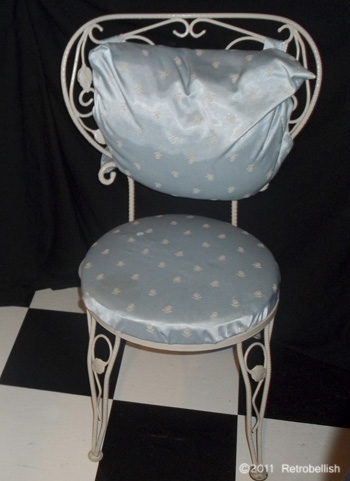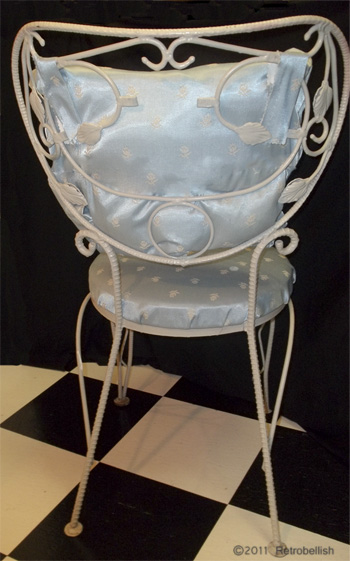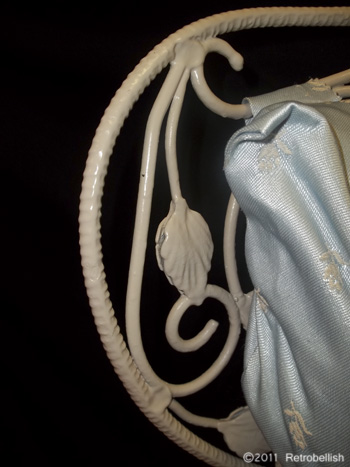Reclaimed Styrofoam Copper Mirror
This Reclaimed Styrofoam Mirror started out as two pieces of insulation boards used for insulating homes. The pieces were thrown away from a construction job in our neighborhood and we thought it would be a great idea to use them for one of our craft projects. The Styrofoam boards were both the same size and rectangular in shape. I painted both boards with flat black acrylic paint. I had a mirror that was chipped at the top, so I used a glass cutter to cut away the chipped area and straighten the mirror edge. I then placed the mirror against one of the Styrofoam boards, measured and centered it, then with a marker, traced the mirror onto the Styrofoam board. With a small serrated kitchen knife, I cut the Styrofoam board on the drawn line all the way through. I then took white glue and glued the cut out Styrofoam onto the other Styrofoam board.
After the glue dried, I painted the front of the Styrofoam board with a faux copper finish. After the paint dried, I put the mirror into the cutout groove of the Styrofoam boards which fit right in. I then lifted the mirror and used white glue at the corners of the mirror to adhere the mirror onto the Styrofoam board. I then used fabric paint to embellish the mirror and outline it. We also used another small piece of Styrofoam to make an embellishment for the top center of the mirror. Before putting the mirror into the Styrofoam, I put a hook in the back of the Styrofoam, but you can omit the hook and push the Styrofoam onto a small nail on the wall instead. The framed mirror looks very nice on the wall, and it’s also very light. According to how you make your mirror, you can also display it on a stand vertically or horizontally.

Reclaimed Styrofoam Mirror
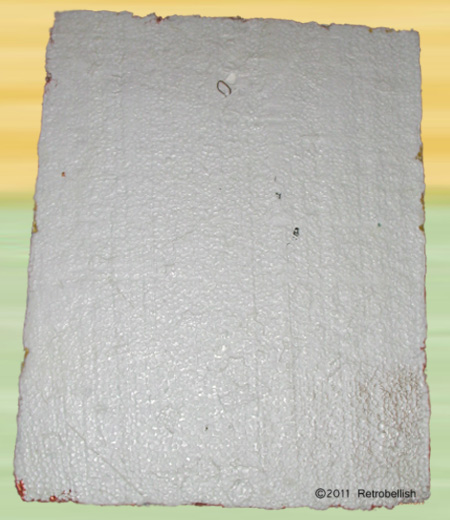
Reclaimed Styrofoam Mirror Backside
Art On Reclaimed Plaster Lion
This lion cub is a plaster piece that had been painted in a dark color that made the lion cub dull and bland. We had acquired some statuary from a plaster business that was closing in Milwaukee, Wisconsin about 13 years ago. I had painted an abstract painting at the time that I named Confetti and my husband suggested that I should paint the same colors and designs on the lion cub as an abstract piece. At first I thought it would be better if I painted the cub in realist coloring and features, but later decided my husband was right and I should give it a try.
It was very interesting to paint the cub in the same abstract colors and designs I had used in my painting. I had so much fun and was very impressed with the results that I decided to name him Calico Cat. Here I have featured the original painting and Calico Cat. I’m glad I listened to my husband’s advice — sometimes it’s fun to use your imagination on an old piece and give it a new look and feel.
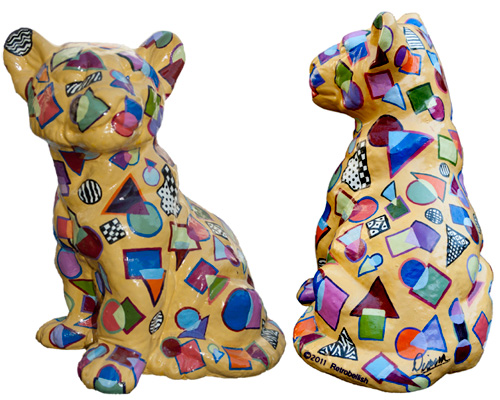
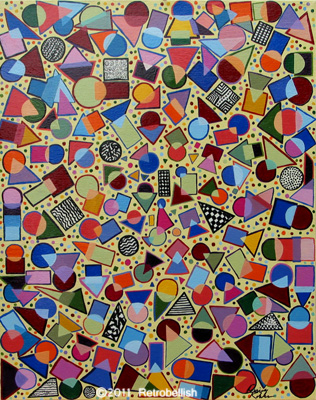
Confetti Painting by Diana Romaxx
Scrap Wood Abstract Fish
This fish was made from leftover scraps of wood that we had saved from a book-shelf we had built a few years ago. The fish was drawn out on the wood freehand and then cut with a scroll-saw. The fish was sanded around the edges just enough to smooth it out. We then drilled a hole big enough to insert a small dowel-rod into the fish body and two holes were also drilled for the glass eyes at this time. The bottom fins were hand cut from fine cuts of the 2×4. To create the base, we used a piece of 2×4 and mitered the edge to give it a rounded cut around the top of it. We then aligned the fish with the base to find the balance point to drill a hole into the base to insert the bottom part of the dowel-rod from the fish body. Wood glue was used to glue the pieces together. The whole thing was then primed with gesso to assure even paint absorption. Then the fun part for me was painting and embellishing the fish.
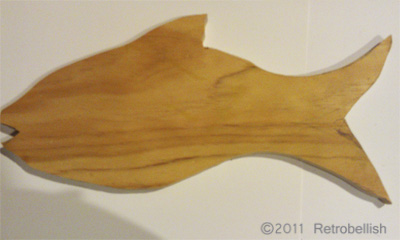
Abstract Wood Fish Cutout
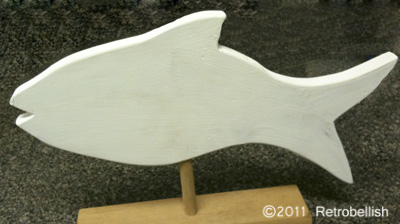
Abstract Wood Fish Primed
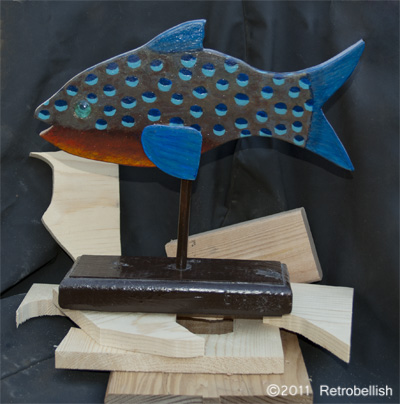
Abstract Wood Fish Left Side
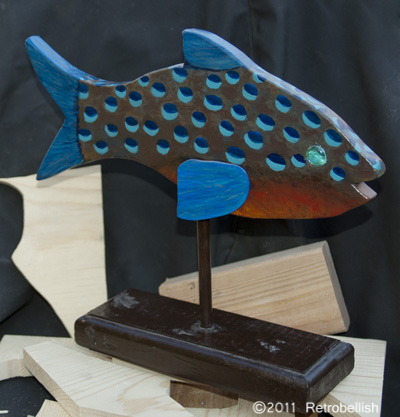
Abstract Wood Fish Right Side
Recycled Gas Grill Planter
This tomato planter started out as a gas grill. It was going to be scrapped before David decided to give it a second chance by cleaning it thoroughly then painting the grill bright red. The side shelves were painted orange and he added some glass embellishments on the front. The grill is used to plant two different types of tomatoes and also doubles as a plant holder. The lid and tank from this grill were also recycled. This grill still has the original wheels so it can be moved around the yard easily.
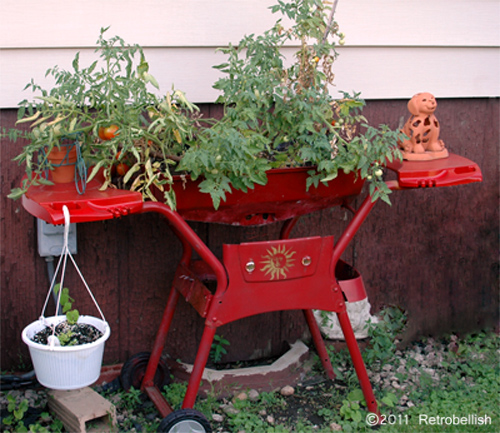
Recycled Gas Grill Planter
